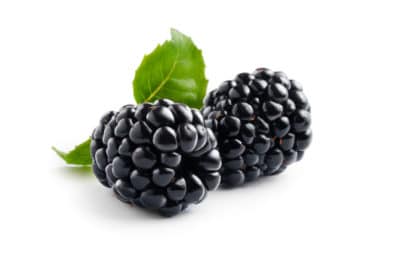Blackberry Anatomy
With every berry you pick from a blackberry bush (Rubus fruticosus), you’re actually harvesting dozens of fruits. Why?
Because every blackberry is a compound cluster of tiny ‘drupelets,’ each of which contains a seed. These drupelets are the perfect size for foraging birds to peck free. After digesting them, the birds excrete the seeds to become new plants.
Expert gardener’s tip: Because blackberry bushes also reproduce by underground runners, there’ little mystery as to why they’ve become invasive across much of USDA plant hardiness zones 4 through 9.
Blackberry Seeds
To most of us, one blackberry seed is indistinguishable from the next. But being able to identify the seeds of different blackberry cultivars is especially important if you intend to grow your own bushes from seed.
Under sufficient magnification, blackberry seeds have very noticeable differences. Their:
- lower edges may be straight, slightly concave, very deeply concave or convex.
- color may be Pink, rosy- or deep-pink’ light- or deep-purple; light-, medium- dark- or yellow-brown; dark purple-brown.
- surface sculpting may be shallow or deep, round, irregular or U-shaped valleys.
If you’re simply someone who loves blackberries’ taste but hates biting into seeds, however, just avoid large-seeded bushes, including:
- ‘Newberry
- ‘Obsidian’
- ‘Cancaska Bestnra’
- ‘Hull Thornless’
Blackberries for Seed-Haters
While seedless blackberries don’t yet exist, commercial growers have managed to produce two cultivars with seeds so small and thin they’re nearly undetectable.
‘Arapaho’
Hardy in USDA zones 6 through 8, ‘Arapaho’ is an erect, summer-bearing cultivar. Released in 1993 by the University of Arkansas, it boasts thornless canes with very early, medium-sized fruit. Expect ‘Arapaho’s’ crop to begin ripening in early June and continue for about a month.
‘Wild Treasure’
‘Wild Treasure,’ a blackberry from Oregon State University, has fruit with seeds so small it’s used in commercial baked goods. The berries themselves are less than half the size of ‘Arapaho’s.’
Its thornless, trailing canes reach up to 6 feet long. They’re ready to harvest beginning in late June. ‘Wild Treasure’ grows in USDA zones 6 through 9.
Expert gardener’s tip: As floricane-fruiting cultivars, “Arapaho’ and ‘Wild Treasure’ won’t produce a harvest until their second year.
